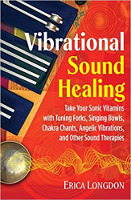
Image by Jerzy Górecki
Narrated by Marie T. Russell
Video version at the end of this article
Silence is God’s first language.
-- Sixteenth-century mystic,
St. John of the Cross
Everything else is a poor translation.
-- Catholic monk Thomas Keating
reflecting on St. John of the Cross’s words
In 2011, a World Health Organization report called noise pollution a modern plague and concluded that “there is overwhelming evidence that exposure to environmental noise has adverse effects on the health of the population.”
We’re constantly filling our ears with noise, TV and radio news, podcasts, and, of course, the multitude of sounds that we create nonstop in our own heads. Think about it: How many moments each day do you spend in total silence? The answer is probably very few.
The nineteenth-century British nurse and social activist Florence Nightingale once wrote, “unnecessary noise is the most cruel absence of care that can be inflicted on either the sick or the well.” Nightingale argued that needless sounds could cause distress, sleep loss, and alarm for recovering patients.
Decades later, research has shown noise can lead to high blood pressure and heart attacks as well as impaired hearing and decreased overall health. Loud noises raise stress levels by activating the brain’s amygdala and causing the release of the stress hormone cortisol.
Just as too much noise can cause stress and tension, research has found that silence has the opposite effect and releases tension in the brain and body.
A 2006 study, published in the journal Heart, found two minutes of silence to be more relaxing than listening to relaxing music and noted that two minutes of silence caused changes in blood pressure and blood circulation in the brain.
Even ten minutes a day, spent in silence, can help you feel less stressed and more focused and creative.
How Can Silence Do This?
According to attention restoration theory, the brain can restore its finite cognitive resources when we’re in environments with lower levels of sensory input than usual. In silence—for instance, the quiet stillness you find when walking alone in nature—the brain can let down its sensory guard, so to speak.
Using brain images of people listening to short symphonies by an obscure eighteenth-century composer, a research team from the Stanford University School of Medicine investigated the power between music and the mind and showed that peak brain activity occurred during a short period of silence between musical movements—when seemingly nothing was happening. This led the researchers to theorize that listening to music could help the brain to anticipate events and hold greater attention, just as the listeners demonstrated when they seemed to pay closest attention during the anticipatory silences between musical movements.
In Other Words: Silence Sharpens Our Focus
The theory is that silence is indeed part of each composer’s intention to guide the listener in interpreting the music in his or her brain. It is the space between the notes that captivates our full attention and allows the busy mind to communicate and become congruent with the heart. It is in these silences where our focus is total.
If you ask a musician, composer, or jazz improvisator, he or she will tell you that the gaps between the notes are as important as the notes themselves. Constantly playing without musical pause creates cacophony.
Another benefit of silence is that it can quite literally grow the brain. In 2013, the journal Brain, Structure, and Function published research comparing the effects of ambient noise, white noise, pup calls, and silence on rodent brains. Although the researchers intended to use silence as a control in the study, they found that two hours of silence daily led to the development of new cells in the hippocampus, a region of the brain associated with learning, memory, and emotion. While preliminary, the findings suggested that silence could be therapeutic for conditions such as depression and Alzheimer’s, which are associated with decreased rates of neuron regeneration in the hippocampus.
Those are the scientific and physical effects.
What Else Can Silence Achieve?
Creating a regular practice of sitting in silence carries great benefit to our health and mental well-being. We come to realize how much we talk and yet how little is said.
Getting acquainted with silence cultivates a mindful use of language and clarity of expression. It also teaches us the art of careful listening. When we really listen to what is said and listen to understand rather than to reply, our communication skills improve. We say what we mean and mean what we say.
Ways to Take Vitamin S
Complete silence in this world is as rare as hens’ teeth. In fact, the only certainty of experiencing it is by sitting in an anechoic chamber. An anechoic chamber is “an-echoic,” meaning it is nonreflective, nonechoing, or echo free. It is a room designed to completely absorb even the reflections of either sound or electromagnetic waves, creating a chamber with an amazing amount of absolute nothingness. Absolute silence is filled by the sound of your own body.
Where is the quietest room in the world? For many years, until 2015, Orfield Laboratories in Minneapolis, Minnesota, held the claim. There, scientists had been studying how subjects reacted in their anechoic chamber, also known as the world’s quietest room. The sound level in the room, which actually held the Guinness World Record, is negative 9 decibels (compare this to the average “quiet” room’s 30). The record is now held by Microsoft’s anechoic chamber, measuring a staggering negative 20.35 decibels.
What is usually experienced when a person sits in an anechoic chamber are two sounds: one high pitched and one low pitched. The high-pitched sound is the sound of the person’s nervous system, and the low-pitched sound is the person’s blood in circulation and often the sound of the beating heart. Given the lack of other sensory input, these sounds can give rise to a more profound physical feeling of the blood pumping through veins.
As most of us are unlikely to experience an anechoic chamber, there are plenty of other ways to cultivate a silent environment.
? Use inexpensive ear defenders to make a place in your home silent so that you can experience your inner sounds.
? Create silence out in nature, where birdsong and gentle leaf rustle serve as the background to quiet contemplation. Sit with your eyes closed and listen. With regular practice, you will attune to nature and recognize a change in the sound of the wind or the symphony of nature and return to the sensitivity our ancient ancestors possessed and wild creatures still do.
? If you are away from home and wish to experience silent moments to achieve peace and balance, closing your eyes and putting focus and gentle attention on the inhalation and exhalation of breath or mentally repeating a mantra are good ways to quieten the mind’s chatter to create a peaceful space. To take your attention to your breath, place your focus on the tip of your nose. Feel the sensation of the cool breath entering on the inhale, and the warmer breath leaving on the exhale. Consciously breathe deep into the belly intending to slow the inhale and exhale, each to the count of eight. Initially, if you can’t manage eight try four, and progress from there. The actual number doesn’t matter; the exercise is to slow the breathing rate. Once the breathing rate is slower, use a mantra with two words, such as So Ham (the pronunciation “soh-hum”). As your mind travels from the So to the Ham, pause between the two words and rest in the silence. This takes practice but can yield great results, taking you into a space of inner silence that we rarely have time to experience in our daily lives.
(Editor's Note: According to Wikipedia, So Ham is a Hindu mantra meaning "I am She/He/That". In Vedic philosophy, it means identifying oneself with the universe or ultimate reality.)
More Ways To Cultivate A Silent Environment
? Strike a singing bowl, and listen to the note die away until you are left contemplating the silence.
? Silence is a wonderful tool when we are facing difficult times in our life. Sit in silence and allow whatever thoughts, sensations, and feelings to arise. So often when challenged, we distract ourselves with retail therapy, drugs, alcohol, food, television, or other modern inventions in the hope that our struggle will all go away. It rarely does! When we cease trying to negate our feelings with worldly distractions and have the courage to sit with our difficulties in silence, we create space to communicate with our truth and find a way to make peace with what is happening. Only then can we release our burdens. Courage is often not the facing of external dangers but the facing of our inner selves and our truths.
? Sitting in silence is a great place to find gratitude. Gratitude is one of the great gifts and powers of human existence, along with forgiveness, which can also be found in the power of silence. Deepak Chopra says: “When you find your gratitude, you find your grace.”
Use one of the above methods to sit in silence once a week (or more!), and see how your perception of life changes. You may experience the little daily joys of life more readily, and when storms come, you will weather them better.
Copyright 2020 by Erica Longdon. All rights reserved.
Reprinted with permission from the publisher,
Healing Arts Press. an imprint of Inner Traditions Intl.
www.InnerTraditions.com.
Article Source
Vibrational Sound Healing: Take Your Sonic Vitamins with Tuning Forks, Singing Bowls, Chakra Chants, Angelic Vibrations, and Other Sound Therapies
by Erica Longdon
 In this practical and accessible guide, Erica Longdon explains the therapeutic and healing impact of sound, frequency, and vibration on the body, mind, and spirit. She shows how sound therapy triggers the body’s natural self-healing mechanisms and offers a non-invasive way to permeate every cell of the body with healing intentions. She presents a wide range of sound-healing methods and vibrational practices. Offering a natural way to treat pain and illness, this guide gives you the tools to connect with your inner healer, restore balance and harmony, and harness the power of vibration for sound health.
In this practical and accessible guide, Erica Longdon explains the therapeutic and healing impact of sound, frequency, and vibration on the body, mind, and spirit. She shows how sound therapy triggers the body’s natural self-healing mechanisms and offers a non-invasive way to permeate every cell of the body with healing intentions. She presents a wide range of sound-healing methods and vibrational practices. Offering a natural way to treat pain and illness, this guide gives you the tools to connect with your inner healer, restore balance and harmony, and harness the power of vibration for sound health.
For more info and/or to order this book, click here. Also available as a Kindle edition, and as an Audiobook narrated by the author.
 About the Author
About the Author
Erica Longdon is a metaphysician, writer, radio host, and healer with 30 years’ experience in television and radio as a script writer and voice-over actor and more than 20 years’ experience as a complementary health practitioner. Adept at connecting with angels, she is a Reiki master and a qualified meditation teacher and works as a psychic advisor with 12Listen.com and for personal clients. Visit her website at AngelHandsHeal.co.uk/
























